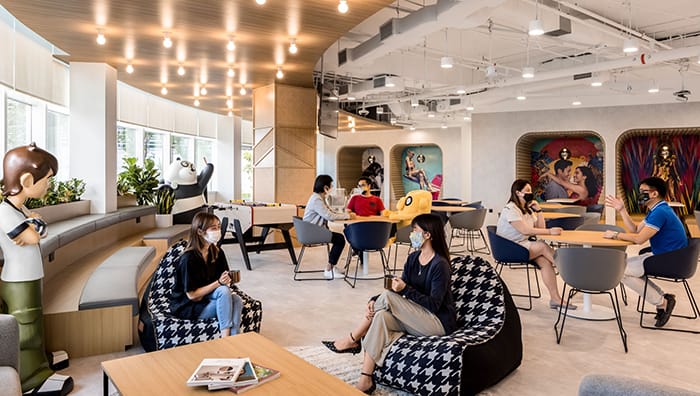Buy Now Pay Later (BNPL) was first introduced over 15 years ago in Europe, as a payment platform that allows shoppers to split their purchases into interest-free monthly deferred payments, usually by scanning an in-store QR code or upon checkout at a partner retailer’s website.
In recent years, BNPL has gained immense popularity amongst merchants and consumers in Asia, with its market share expected to more than double by 2024, according to the Global Payments Report 2021 by FIS-Worldpay. While BNPL is seen as a rising global movement, it is important to note that the use case and macro landscape across the regions vary significantly.
Unlike established markets such as the United States, Australia and Europe, Asia is highly fragmented (eg. credit profile, religion, language, culture) with a large unbanked and underbanked population, especially in emerging markets such as Indonesia and Vietnam. For example, in Southeast Asia (SEA), only 27% of the overall 670 million population has bank accounts. This sizable gap in traditional banking penetration has resulted in at least 438 million unbanked or underbanked consumers, with limited access to basic financial services and subsequently, a thin credit profile. Consequently, retailers should partner with BNPL brands with robust risk assessment and credit profiling technology to minimise transaction rejects and fraud cases.
SEA is also leading the charge in digital consumption, having added 60 million new digital consumers to the internet economy since the pandemic started. The massive digitisation that the region witnessed in 2020, triggered by the COVID-19 pandemic, saw SEA lead as a mobile-first consumer economy.
Retailers partner BNPL providers to tap on the young and emerging digital consumers – shoppers who are mobile-first and digitally savvy and may be experiencing major life events such as getting their first job or house, getting married, and having their first child. It is estimated that by 2030, 75% of consumers in ASEAN will be under the age of 30.
Physical shopping in SEA remains a social activity for many, and shoppers still prefer to see and touch products before making the commitment to purchase. This is different from other developed markets in Europe or the US where e-commerce is widely adopted because of good public infrastructure (e.g. cheap broadband, good last-mile delivery to every home).
For the shoppers in SEA, they value omnichannel retail shopper experience, one that allows them to shop and purchase seamlessly across online and offline channels. What this means for retailers and BNPL players in this region is that the physical store experience is critical when it comes to increasing in-store conversion, basket size, and the overall brand and shopping experience.
Merchants who have adopted BNPL in their business have seen benefits including improved sales, traffic, and conversions. With BNPL, merchants can also unlock a new segment of shoppers and understand their shopping behaviours.
BNPL V2.0
As BNPL matures in Asia, it will evolve from its current basic model of interest-free monthly payments to further enable merchants. We’ve seen examples of new products and services launched, for example, co-branded cards, savings accounts, investment products, and personal finance management.
Traditional banks and even digibanks are also developing and launching their own BNPL offerings. Potential evolution pathways of BNPL and features include:
1. Greater industry adoption
With wider customer adoption and demand for payment choice and flexibility, other retail categories beyond fashion, lifestyle, and beauty categories are experimenting with BNPL. Travel and hospitality, food and beverage, and luxury and premium retail are some examples.
2. Open-loop payment services
Open-loop is a payment method that can be used anywhere that brand of cards or e-wallets is accepted. As BNPL gains momentum globally, BNPL players are introducing co-branded credit cards and e-wallets with payment providers to create an open-loop system that is not restricted to signed merchants. This will greatly accelerate BNPL acceptance across retailers who for example, already accept payments for example, via Visa or Mastercard. BNPL brands also partner with payment service providers, web builders, e-commerce enablers to provide integration support for merchants and accelerate the wider acceptance and integration of BNPL solutions.
3. Social commerce
SEA is expected to lead the biggest market for social commerce, especially given how a large chunk of its population is entering its prime of technology adoption. Social commerce (78%) has become the second most preferred shopping channel in the region, second only to e-commerce platforms (91%).
In 2020, clothes, apparel, and accessories continue to lead social shopping (71%), followed by health and beauty (59%), and electronics and appliances (53%). A large majority of Gen Z and millennials are leveraging social platforms not just to connect and explore, but also to shop and inspire. Increasingly, BNPL players are developing social commerce features to create highly targeted and personalised content recommendations to help promote organic engagements with merchants.
4. Customised merchant services
One of the key strengths for BNPL players is a strong understanding of user demographics and shopping behaviour. Moving forward, BNPL players can invest in co-marketing and merchant-enabler features such as social CRM, loyalty programme, co-marketing, and concierge-like membership services, and this would be crucial in connecting with a community of young, aspirational, and digitally-savvy consumers.
5. Broader financial services
Finally, BNPL players can also introduce offerings with longer tenures especially for high-value items like electronics and smartphones, and money management services such as savings accounts and investment options. As the BNPL industry continues to thrive in the coming years, the evolution of BNPL will further enable and empower merchants and create a strong and holistic ecosystem that drives engagement and value through every facet of the consumer’s purchase journey.

This article is written by Jeremy Wong, head of strategic partnerships at BNPL platform Atome.
The article is published as part of MARKETECH APAC’s thought leadership series What’s NEXT. This features marketing leaders sharing their marketing insights and predictions for the upcoming year. The series aims to equip marketers with actionable insights to future-ready their marketing strategies.
If you are a marketing leader and have insights that you’d like to share with regards to the upcoming trends and practices in marketing, please reach out to [email protected] for an opportunity to have your thought-leadership published on the platform.










